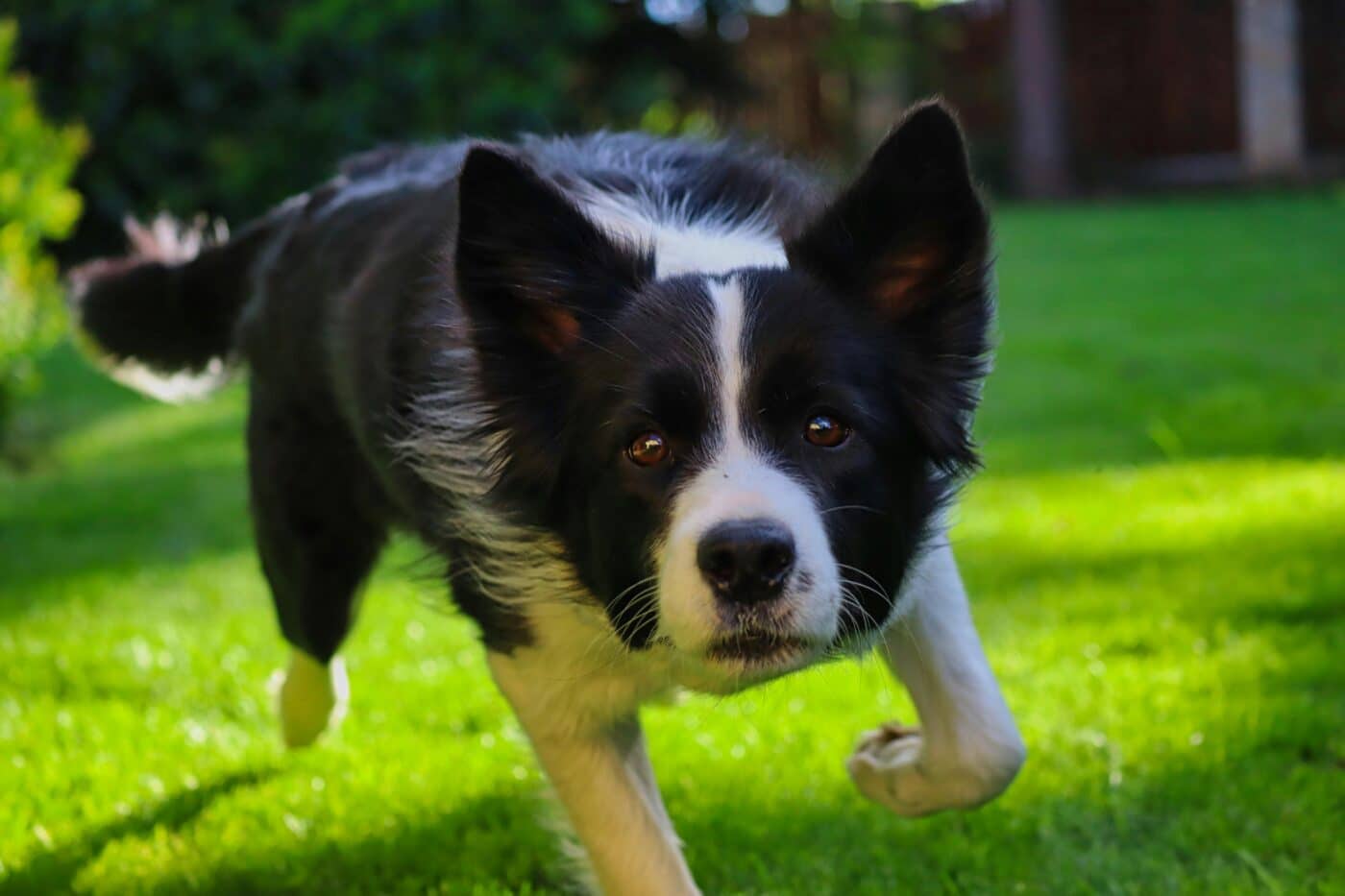 Shutterstock
Shutterstock
Dogs have many fascinating features, but one of their most intriguing and often overlooked traits is their whiskers. These specialized hairs, vibrissae, are far more than just facial decorations. Whiskers are found not only on their muzzles but also above their eyes, chins, and sometimes on their cheeks. Whiskers are vital to a dog’s ability to navigate the world around them. While many assume whiskers serve only as aesthetic additions, they have a powerful sensory function that helps dogs gather important information about their surroundings.
Whiskers as Sensory Antennae
 Shutterstock
Shutterstock
The primary function of a dog’s whiskers is to act as highly sensitive sensory antennae. Each whisker is deeply embedded in a follicle rich in nerves and blood vessels, making them incredibly responsive to even the slightest environmental movement. These specialized hairs can detect changes in air currents, vibrations, and even touch. For example, if dogs navigate in the dark, their whiskers help them sense nearby objects without physically touching them. The slightest shift in the air can inform the dog of an object’s proximity, helping them avoid collisions or easily navigate tight spaces. This makes whiskers an essential tool for dogs, especially in low-visibility situations.
A Tool for Close-Range Navigation
 Shutterstock
Shutterstock
Dogs use their whiskers to assist in close-range navigation, particularly in tight or dark spaces. For instance, when dogs explore narrow areas or areas with limited light, their whiskers act as an early warning system. They can “feel” through obstacles, avoiding collisions or potential dangers. Since dogs’ eyes are positioned on the sides of their heads, they have a blind spot directly in front of their noses. Whiskers fill this gap by detecting objects in close range, allowing dogs to navigate their environments more safely. This function is especially important for breeds that hunt or track, as they often explore dense vegetation or underground spaces with limited visibility.
Protection for the Eyes
 Shutterstock
Shutterstock
Whiskers aren’t just tools for exploration; they also serve as a defense mechanism for a dog’s eyes. The whiskers above a dog’s eyes, known as supraorbital whiskers, are particularly important. When something brushes against these whiskers, it triggers a blink reflex, protecting the eyes from potential harm. Whether it’s a branch in the woods or debris blown by the wind, whiskers help dogs react quickly to avoid getting foreign objects in their eyes. This protective feature is especially crucial for dogs frequently engaging in outdoor activities, as it shields their eyes from environmental hazards.
A Communication Tool
 Shutterstock
Shutterstock
Whiskers also play a role in dog-to-dog communication. Along with their body language, dogs use their whiskers to send signals to other animals. When a dog is curious or alert, their whiskers will fan out and become more rigid, showing that they are paying attention to something. Conversely, when a dog feels threatened or submissive, their whiskers may lie flat against their face. Observing a dog’s whisker position can give insight into their mood and intentions, making whiskers an essential part of canine communication. While not as obvious as wagging tails or bared teeth, whiskers offer subtle clues about a dog’s emotional state.
Enhancing the Sense of Touch
 Shutterstock
Shutterstock
Whiskers help enhance a dog’s sense of touch. Although dogs primarily rely on their sense of smell to explore the world, their sense of touch—through their whiskers—adds another layer of sensory input. For instance, when dogs sniff an object, their whiskers brush against it, sending tactile information to their brains. This allows them to better understand the object’s size, texture, and position. Whether sniffing out prey, investigating a new toy, or exploring their environment, whiskers provide critical feedback that helps dogs understand the physical properties of their interaction.
Aging and Sensory Compensation
 Shutterstock
Shutterstock
As dogs age, their senses may decline, particularly vision and hearing. However, whiskers continue to serve as an invaluable tool for sensory compensation. Older dogs, especially those with impaired sight, rely heavily on their whiskers to navigate their environment and detect obstacles. In this way, whiskers help senior dogs maintain their independence and mobility, even when other senses weaken. By detecting subtle changes in their surroundings, whiskers allow aging dogs to stay more aware of their environment, preventing accidents and helping them feel more secure.
Different Breeds, Different Whiskers
 Shutterstock
Shutterstock
Whiskers aren’t uniform across all dog breeds. Some breeds, particularly those bred for hunting or retrieving, tend to have more prominent or longer whiskers. Breeds like the Beagle, Bloodhound, and Wirehaired Pointing Griffon rely heavily on their whiskers to track and sense prey. Conversely, some toy breeds or those bred for appearance over function, such as the Chihuahua or Pomeranian, may have smaller or less pronounced whiskers. Despite these differences, all dogs use their whiskers in some capacity, and the function remains essential across breeds, no matter the size or appearance of the whiskers.
Whiskers and Emotional Responses
 Shutterstock
Shutterstock
A dog’s whiskers can also provide insight into their emotional state. When a dog is anxious or stressed, their whiskers may become more rigid or bristle, much like how their fur can stand on end. Conversely, when dogs are relaxed, their whiskers may lie more softly against their face. Paying attention to a dog’s whisker movement and positioning can give owners clues about how their dog feels in different situations. While whiskers alone don’t tell the whole story, they are an important puzzle for understanding canine emotions.
Whiskers and Hunting Instincts
 Shutterstock
Shutterstock
For dogs bred for hunting, whiskers play a particularly vital role. Hunting dogs rely on their whiskers to detect movements in the air and vibrations on the ground, helping them locate and track prey. In tight quarters, such as burrows or dense brush, whiskers allow dogs to navigate effectively without relying solely on their vision. In fact, many hunting breeds have extra-long or stiff whiskers to aid in these tasks. Whether tracking a scent or retrieving a game from difficult terrain, whiskers are an essential tool for hunting dogs, aiding them in their tasks with precision and efficiency.
Do Dogs Feel Pain If Their Whiskers Are Cut?
 Shutterstock
Shutterstock
One of the most common questions about whiskers is whether cutting them causes dogs pain. While cutting a dog’s whiskers doesn’t hurt them like cutting fur or skin would, it disrupts their sensory capabilities. Because whiskers are deeply embedded in nerve-rich follicles, trimming or removing them can confuse a dog and make it more difficult for them to navigate their surroundings. Dogs rely on their whiskers for spatial awareness, so cutting them can lead to disorientation or discomfort. It’s always best to leave your dog’s whiskers intact and let them serve their natural purpose.
Whiskers in Different Environments
 Shutterstock
Shutterstock
Just as dogs use their whiskers to navigate tight spaces or protect their eyes, they also use them to adapt to different environments. Whether it’s the dense underbrush of a forest or a cluttered room, whiskers help dogs move confidently through various settings. In particular, whiskers are highly beneficial in low-light conditions, where vision alone might not be sufficient. Dogs can use their whiskers to detect subtle air movements or the proximity of objects, allowing them to avoid obstacles even in near darkness. In this sense, Whiskers provides dogs with a “sixth sense” for spatial awareness.
The Magic of Dog Whiskers
 Shutterstock
Shutterstock
Your dog’s whiskers are far more than just facial fur. These remarkable tools help dogs navigate their surroundings, protect their eyes, communicate with others, and enhance their sense of touch. Whether guiding them through the dark or shielding them from hazards, whiskers play an essential role in a dog’s daily life. Though they seem like small, insignificant hairs, whiskers are crucial to how dogs experience the world. So, the next time your dog’s whiskers twitch, remember—they’re doing much more than just looking cute!
 Toledo, United States.
Toledo, United States.